Co-Design of Single-Layer RCS-Reducing Surface and Antenna Array Based on AMC Technique
Abstract
1. Introduction
2. Co-Design Strategy and Implementation
2.1. Co-Design Strategy
- (1)
- Configure the patch shape according to the requirements of the antenna, including the operating frequency, the gain, the side-lobe level, and the polarization. This patch is named as the radiation-scattering AMC unit.
- (2)
- Design the second AMC unit, which has the opposed-phased reflection unlike the radiation-scattering AMC unit. This unit is named as the opposed-phase AMC unit.
- (3)
- Configure the checkerboard configuration of the two AMC units and choose the suitable radiation-scattering AMC units to form the antenna array.
- (4)
- Design the feeding network according to the antenna array layout.
2.2. Radiation-Scattering AMC and Opposed-Phase AMC
2.3. RCS Reduction
2.4. Antenna Array
3. Fabrication and Measurement
4. Conclusions
Author Contributions
Funding
Data Availability Statement
Conflicts of Interest
References
- Knott, E.F.; Shaeffer, J.F.; Tuley, M.T. Radar Cross Section, 2nd ed.; The Institution of Engineering and Technology: London, UK, 2004; pp. 269–295. [Google Scholar]
- Chen, H.Y.; Hou, X.Y.; Deng, L.J. Design of frequency-selective surfaces radome for a planar slotted waveguide antenna. IEEE Trans. Antennas Propag. 2009, 8, 1231–1233. [Google Scholar] [CrossRef]
- Mei, P.; Lin, X.Q.; Yu, J.W.; Zhang, P.C.; Boukarkar, A. A low radar cross section and low profile antenna co-designed with absorbent frequency selective radome. IEEE Trans. Antennas Propag. 2018, 66, 409–413. [Google Scholar] [CrossRef]
- Yang, H.H.; Li, T.; Liao, J.W.; Gao, K.; Li, Q.; Li, S.J.; Cao, X.Y. Ultrawideband low-RCS array antenna based on double-layer polarization conversion metasurface. IEEE Antennas Wirel. Propag. Lett. 2024, 23, 4069–4073. [Google Scholar] [CrossRef]
- Xing, Z.; Yang, F.; Yang, P.; Yang, J. A low-RCS and wideband circularly polarized array antenna co-designed with a high-performance AMC-FSS radome. IEEE Antennas Wirel. Propag. Lett. 2022, 21, 1659–1663. [Google Scholar] [CrossRef]
- Feresidis, A.P.; Goussetis, G.; Wang, S.H.; Vardaxoglou, J.C. Artificial magnetic conductor surfaces and their application to low-profile high-gain planar antennas. IEEE Antennas Wirel. Propag. 2005, 53, 209–215. [Google Scholar] [CrossRef]
- Dewan, R.; Rahim, M.K.A.; Hamid, M.R.; Yusoff, M.F.M.; Samsuri, N.A.; Murad, N.A.; Kamardin, K. Artificial magnetic conductor for various antenna applications: An overview. Int. J. RF Microw. Comput. Aided Eng. 2017, 27, 21105. [Google Scholar] [CrossRef]
- Qi, Y.; Zhang, B.; Liu, C.; Deng, X. Ultra-broadband polarization conversion meta-surface and its application in polarization converter and RCS reduction. IEEE Access 2020, 8, 116675–116684. [Google Scholar] [CrossRef]
- Zheng, Y.; Gao, J.; Cao, X.; Yuan, Z.; Yang, H. Wideband RCS reduction of a microstrip antenna using artificial magnetic conductor structures. IEEE Antennas Wirel. Propag. Lett. 2015, 14, 1582–1585. [Google Scholar] [CrossRef]
- Bandyopadhyay, B.; Bhattacharya, S.; Jaiswal, R.K.; Saikia, M.; Srivastava, K.V. Wideband RCS reduction of a linear patch antenna array using AMC metasurface for stealth applications. IEEE Access 2013, 11, 127458–127467. [Google Scholar] [CrossRef]
- Genovesi, S.; Costa, F.; Monorchio, A. Low-profile array with reduced radar cross section by using hybrid frequency selective surfaces. IEEE Trans. Antennas Propag. 2012, 60, 2327–2335. [Google Scholar] [CrossRef]
- Zhang, W.; Liu, Y.; Jia, Y. Circularly polarized antenna array with low RCS using metasurface-inspired antenna units. IEEE Antennas Wirel. Propag. Lett. 2019, 18, 1453–1457. [Google Scholar] [CrossRef]
- Wang, P.F.; Jia, Y.T.; Hu, W.Y.; Liu, Y.; Lei, H.Y.; Sun, H.B.; Cui, T.J. Circularly polarized polarization conversion metasurface-inspired antenna array with low RCS over a wide band. IEEE Trans. Antennas Propag. 2023, 71, 5626–5636. [Google Scholar] [CrossRef]
- Zheng, Q.; Guo, C.; Ding, J.; Vandenbosch, G.A.E. A broadband low-RCS metasurface for CP patch antennas. IEEE Trans. Antennas Propag. 2021, 69, 3529–3534. [Google Scholar] [CrossRef]
- Qiu, L.; Xiao, G. A broadband metasurface antenna array with ultrawideband RCS reduction. IEEE Trans. Antennas Propag. 2022, 70, 8620–8625. [Google Scholar] [CrossRef]
- Zhang, D.; He, C.; Zhu, Z.; Chen, Q.; Hong, L. An OAM antenna with low RCS characteristic based on radiation-scattering-integration strategy. In Proceedings of the 2023 International Conference on Microwave and Millimeter Wave Technology (ICMMT), Qingdao, China, 14–17 May 2023. [Google Scholar]
- Liu, K.Y.; Guo, W.L.; Wang, G.M.; Li, H.P.; Liu, G. A novel broadband bi-functional metasurface for vortex generation and simultaneous RCS reduction. IEEE Access 2018, 6, 63999–64007. [Google Scholar] [CrossRef]
- Liu, Y.; Jia, Y.; Zhang, W.; Wang, Y.; Gong, S.; Liao, G. An integrated radiation and scattering performance design method of low-RCS patch antenna array with different antenna elements. IEEE Trans. Antennas Propag. 2019, 67, 6199–6204. [Google Scholar] [CrossRef]
- Li, Y.J.; Jin, J.; Yang, Z.G.; Dou, J.; Cheng, H.Y.; Wang, Y.; Yang, H.L. Low-RCS low-profile MIMO antenna and array antenna using a polarization conversion metasurface. Opt. Express 2023, 31, 38771–38785. [Google Scholar] [CrossRef]
- Wang, P.; Jia, Y.; Hu, W.; Zhang, J.; Liu, Z.X.; Liu, Y. Broadband low-RCS circularly polarized antenna array with reconfigurable scattering patterns. IEEE Trans. Antennas Propag. 2024, 72, 2279–2290. [Google Scholar] [CrossRef]
- Chen, H.Z.; Zhen, Q.T.; Chen, J.; Sun, H.Y.; Li, H.R.; Chernogor, L.F.; Sun, Z.S.; Zheng, Y.; Liu, T.; Jin, Z.J. X-band and low-RCS flexible wideband antenna array based on metasurface. IEEE Antennas Wirel. Propag. Lett. 2025, 24, 567–571. [Google Scholar] [CrossRef]
- Constantine, A.B. Antenna Theory: Analysis and Design, 4th ed.; John Wiley & Sons: Hoboken, NJ, USA, 2016; p. 791. [Google Scholar]
- Zhao, Y.; Cao, X.; Gao, J.; Liu, X. A low-RCS and high-gain slot antenna using broadband metasurface. IEEE Antennas Wirel. Propag. Lett. 2016, 15, 290–293. [Google Scholar] [CrossRef]
- Yang, H.H.; Li, T.; Xu, L.M.; Cao, X.Y.; Jidi, L.; Guo, Z.X. Low in-band-RCS antennas based on anisotropic metasurface using a novel integration method. IEEE Trans. Antennas Propag. 2021, 69, 1239–1248. [Google Scholar] [CrossRef]
- Elahi, M.; Koziel, S.; Leifsson, L. A non-PCM-based 2 × 2 MIMO antenna array with low radar cross-section using characteristic mode analysis. IEEE Access 2025, 13, 34296–34306. [Google Scholar] [CrossRef]

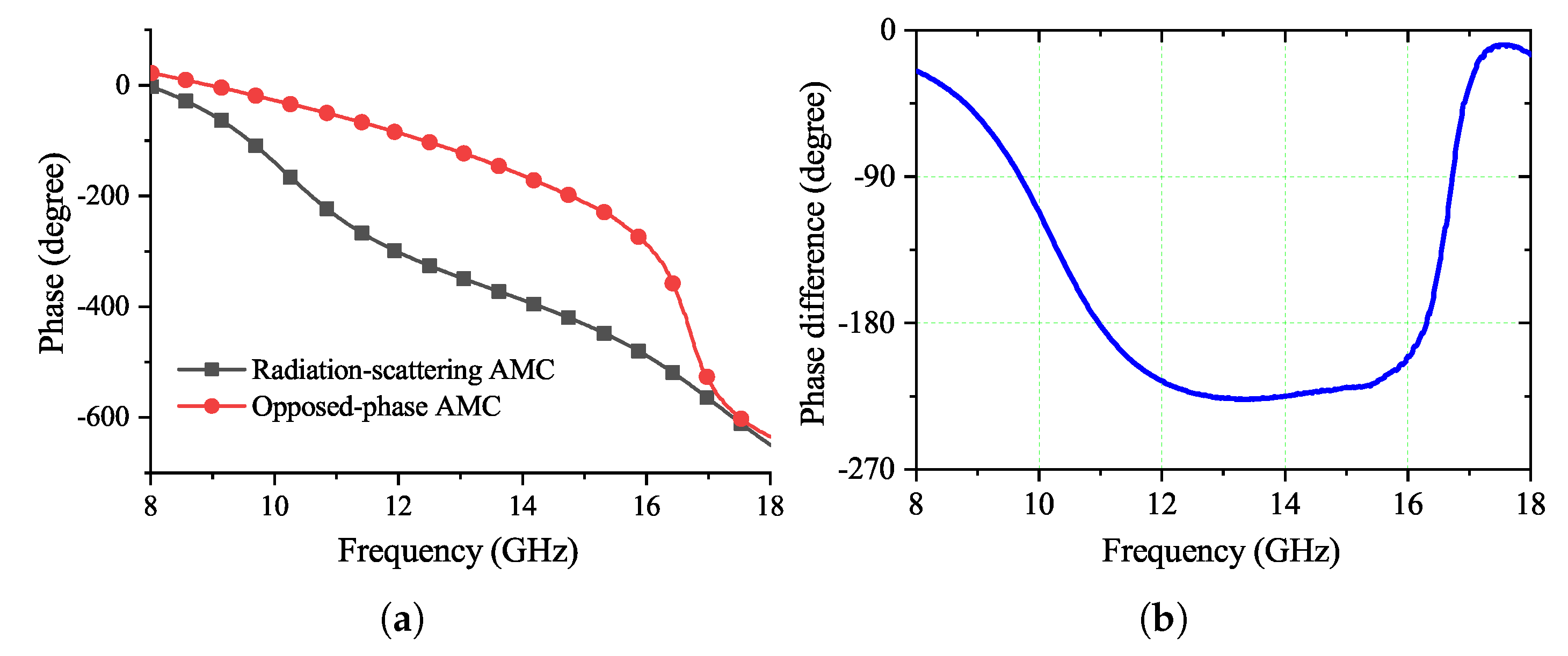
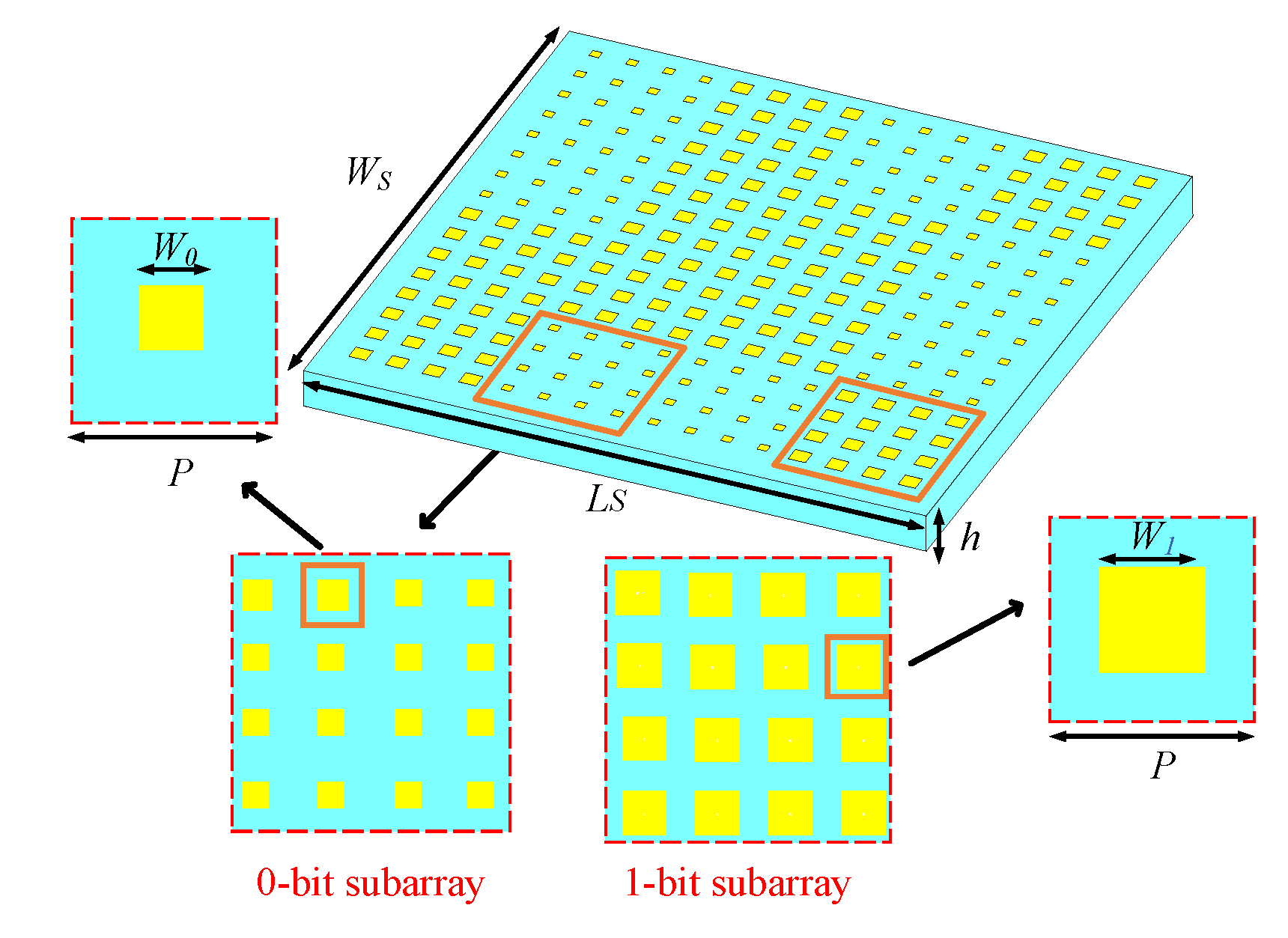
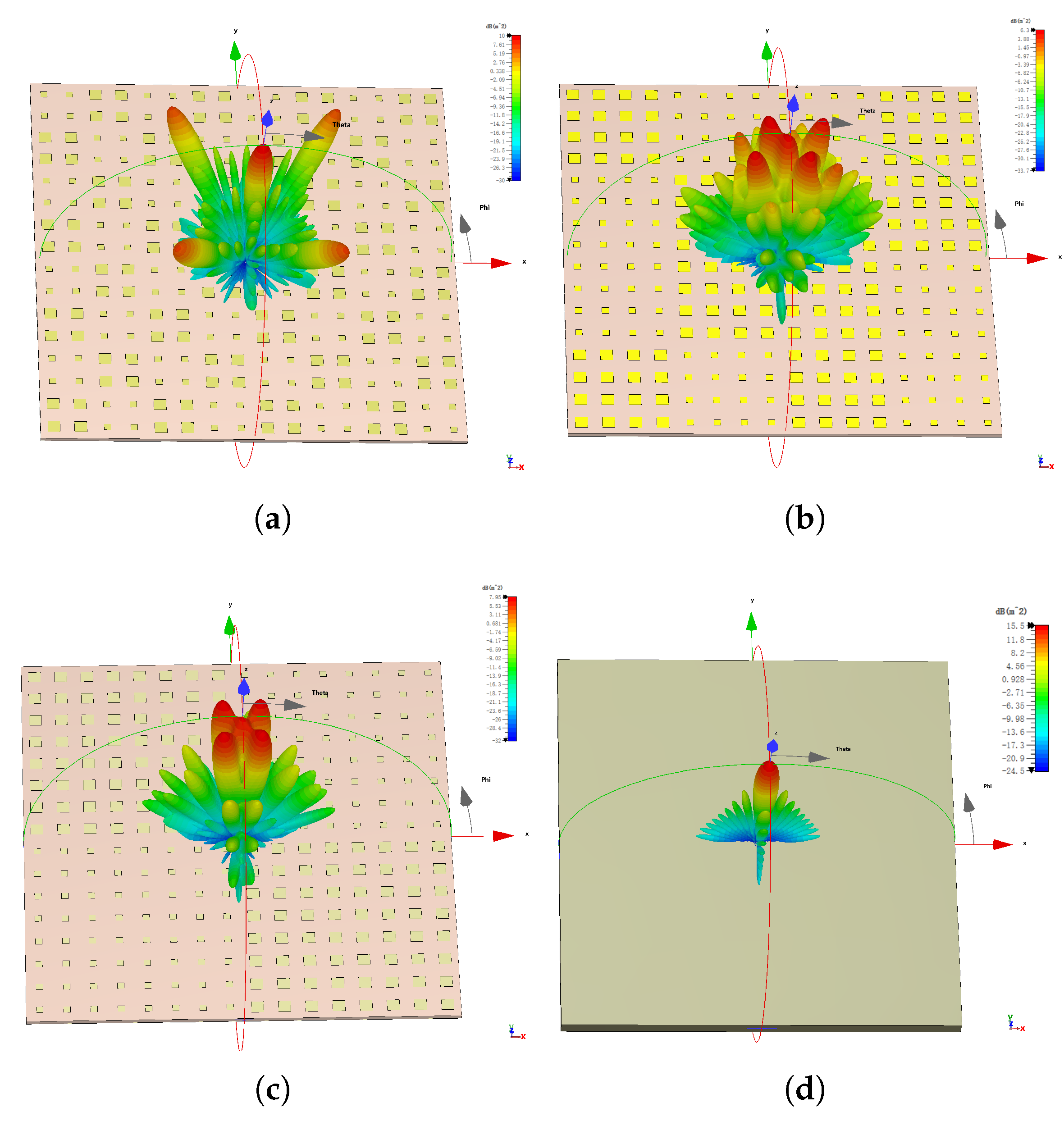
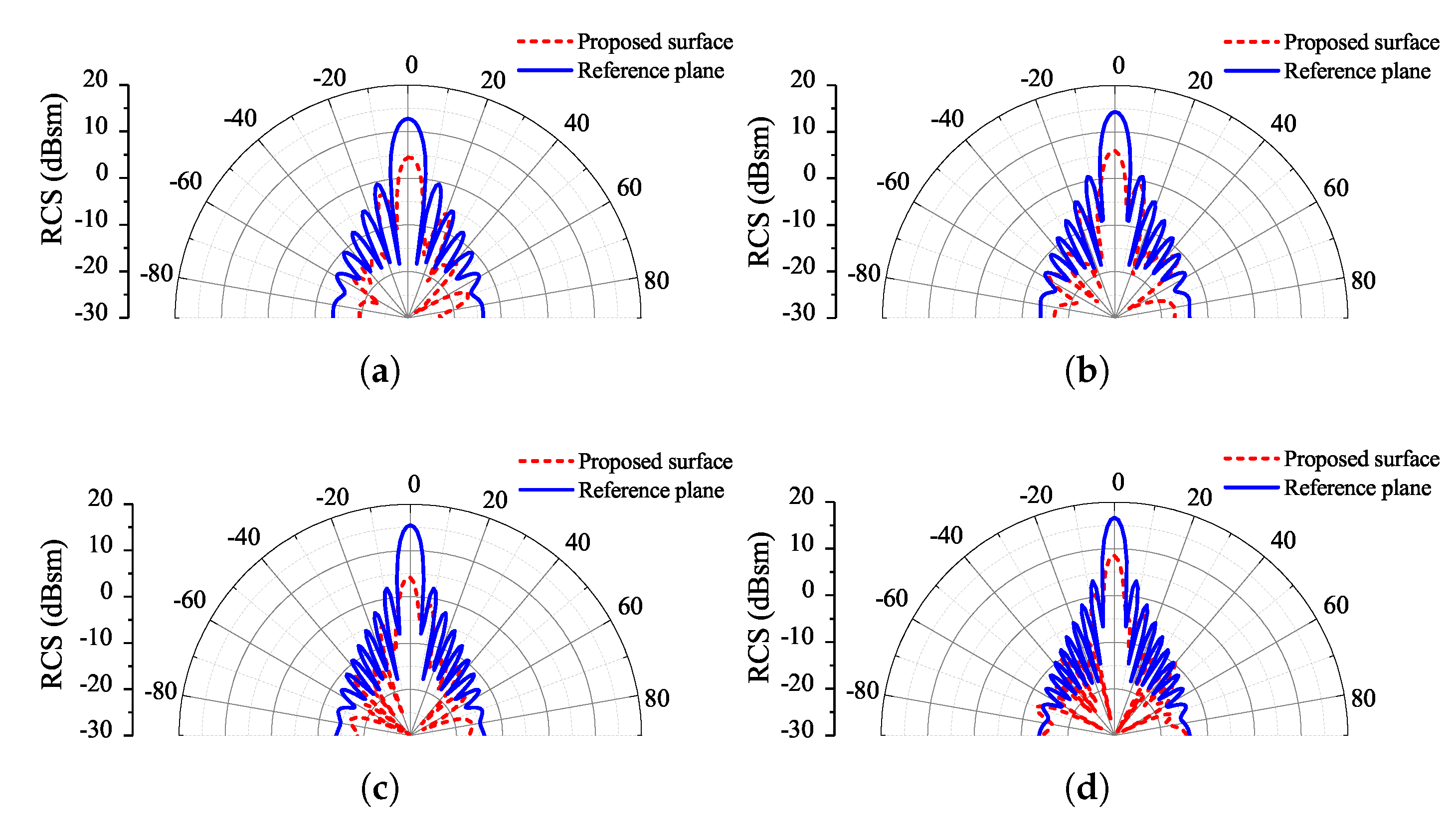
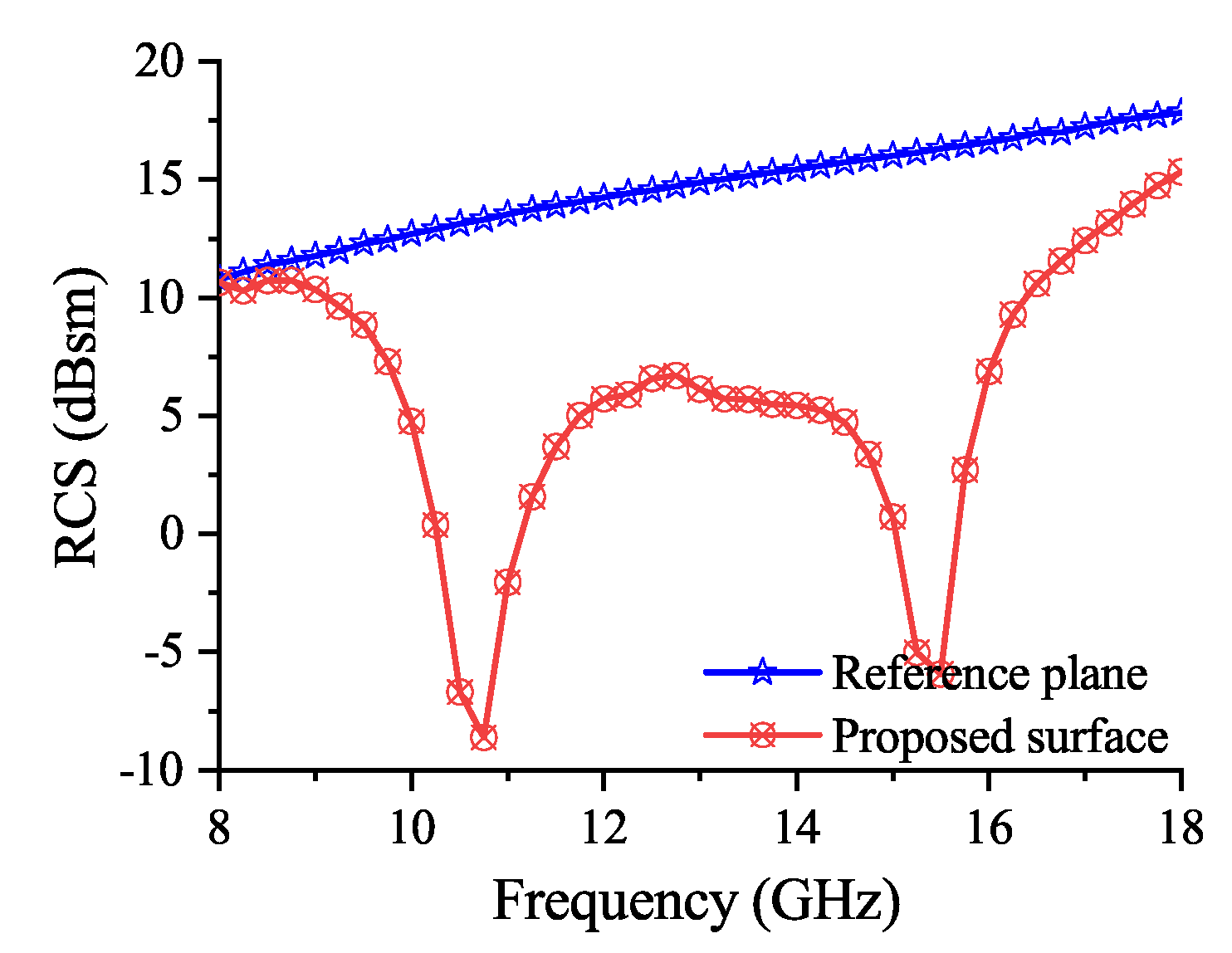
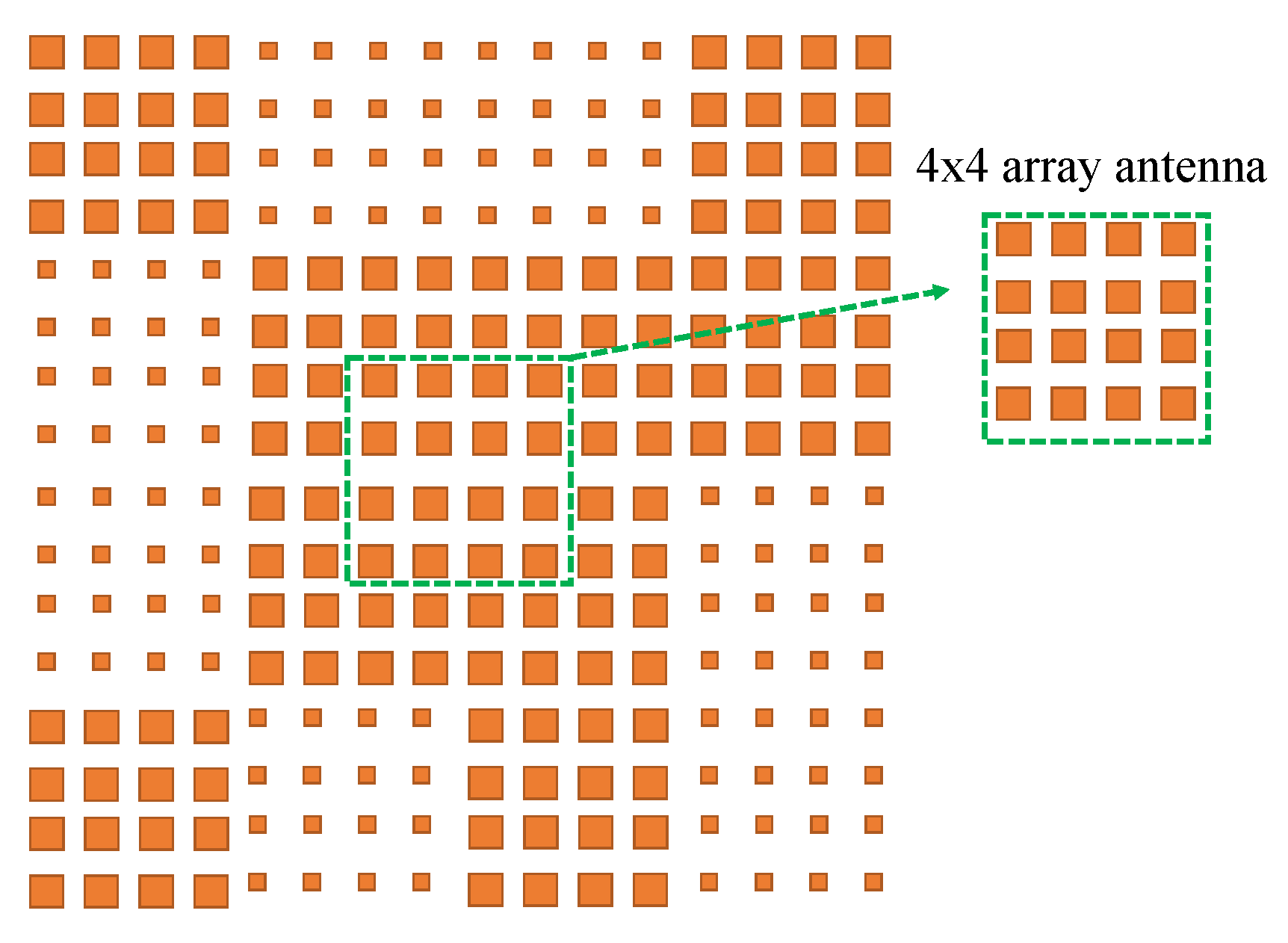
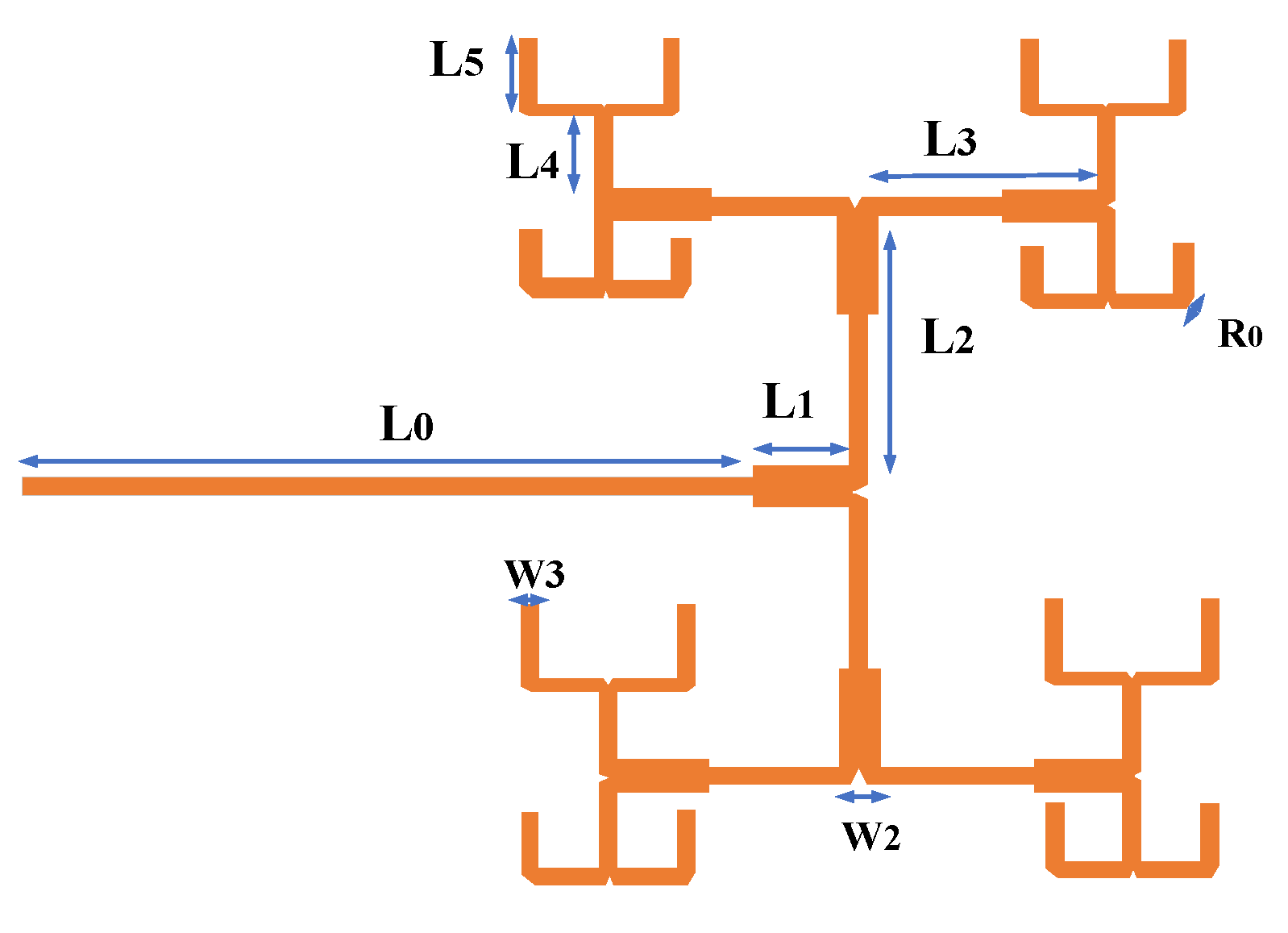
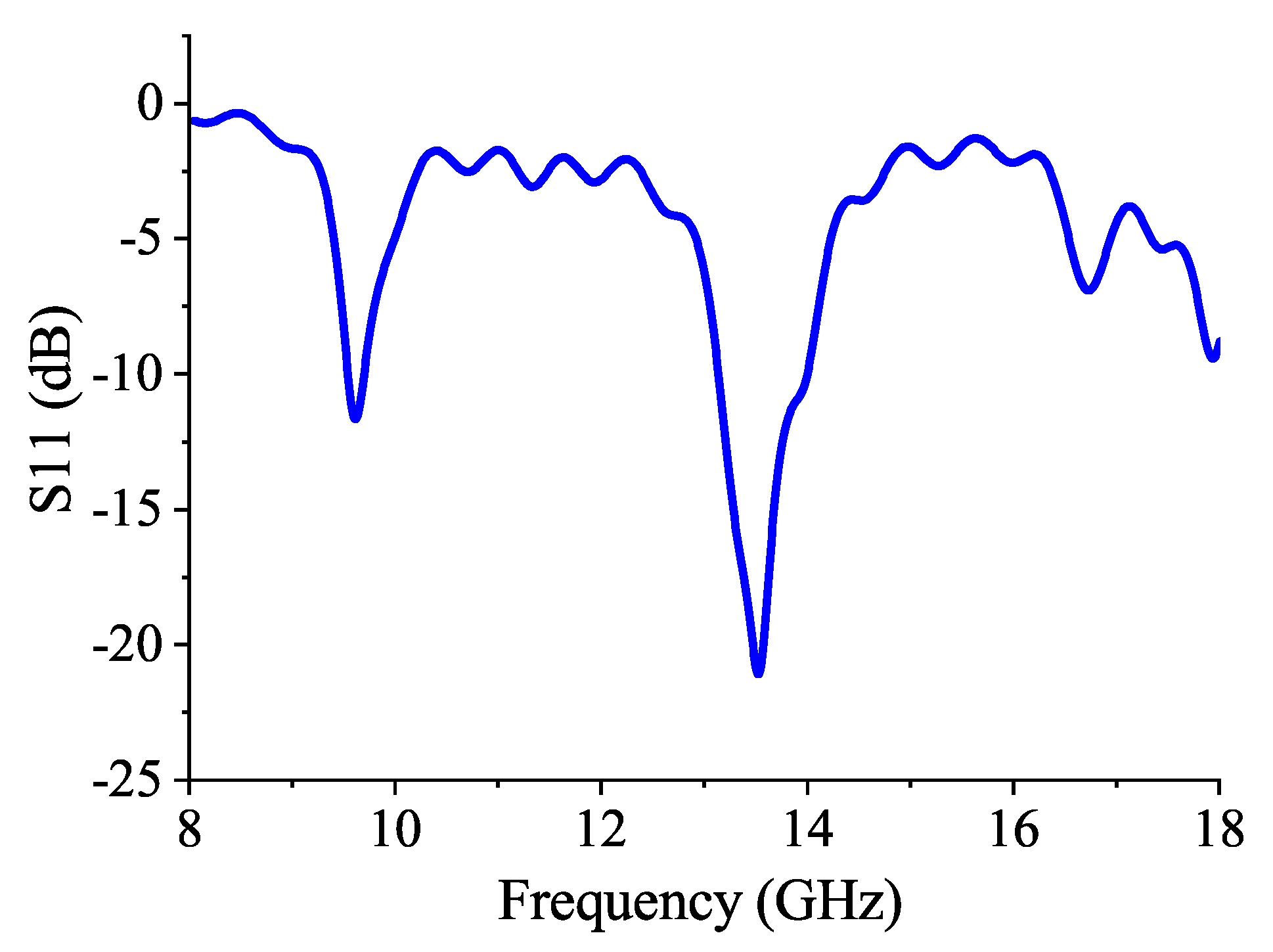
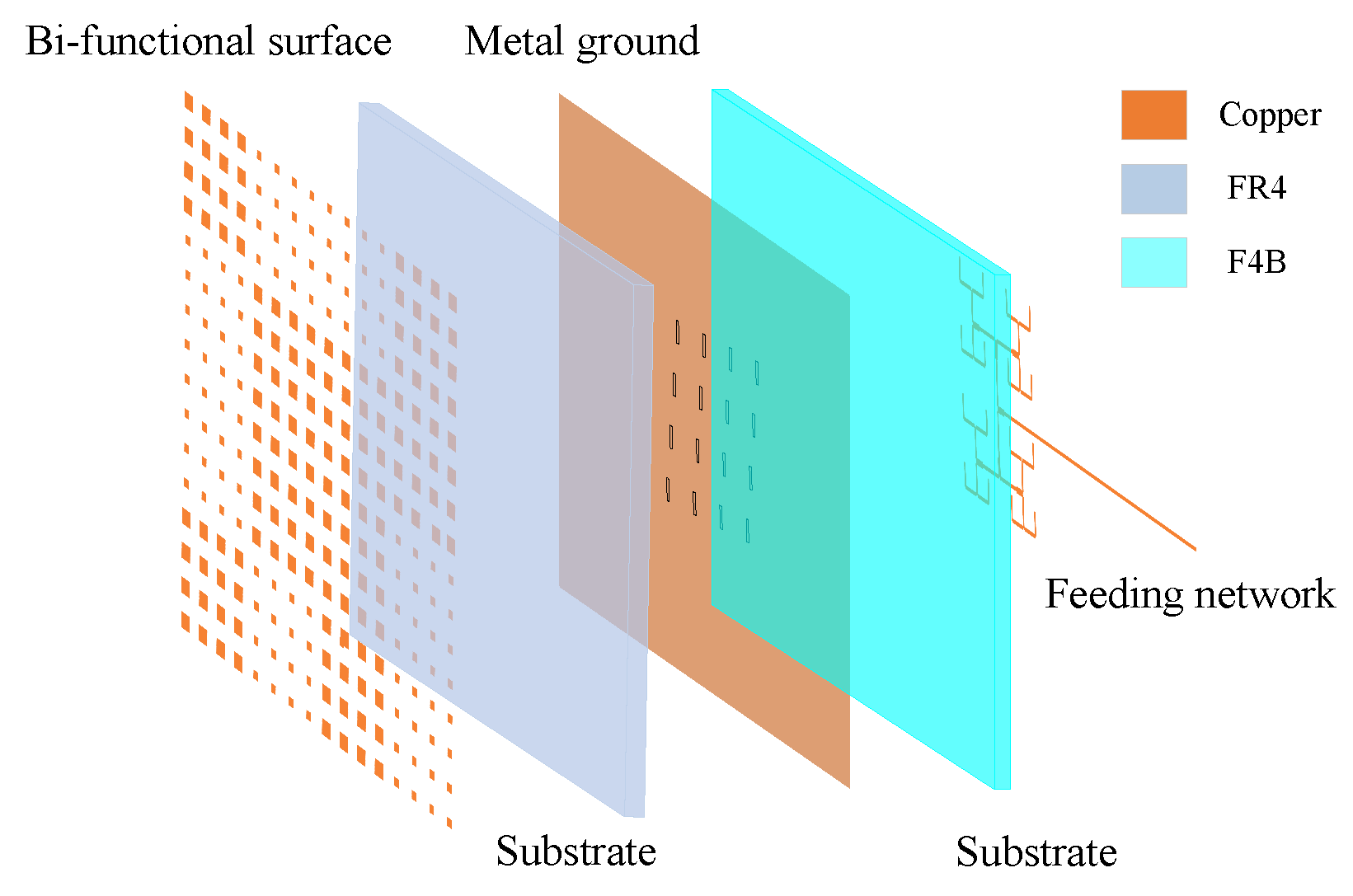


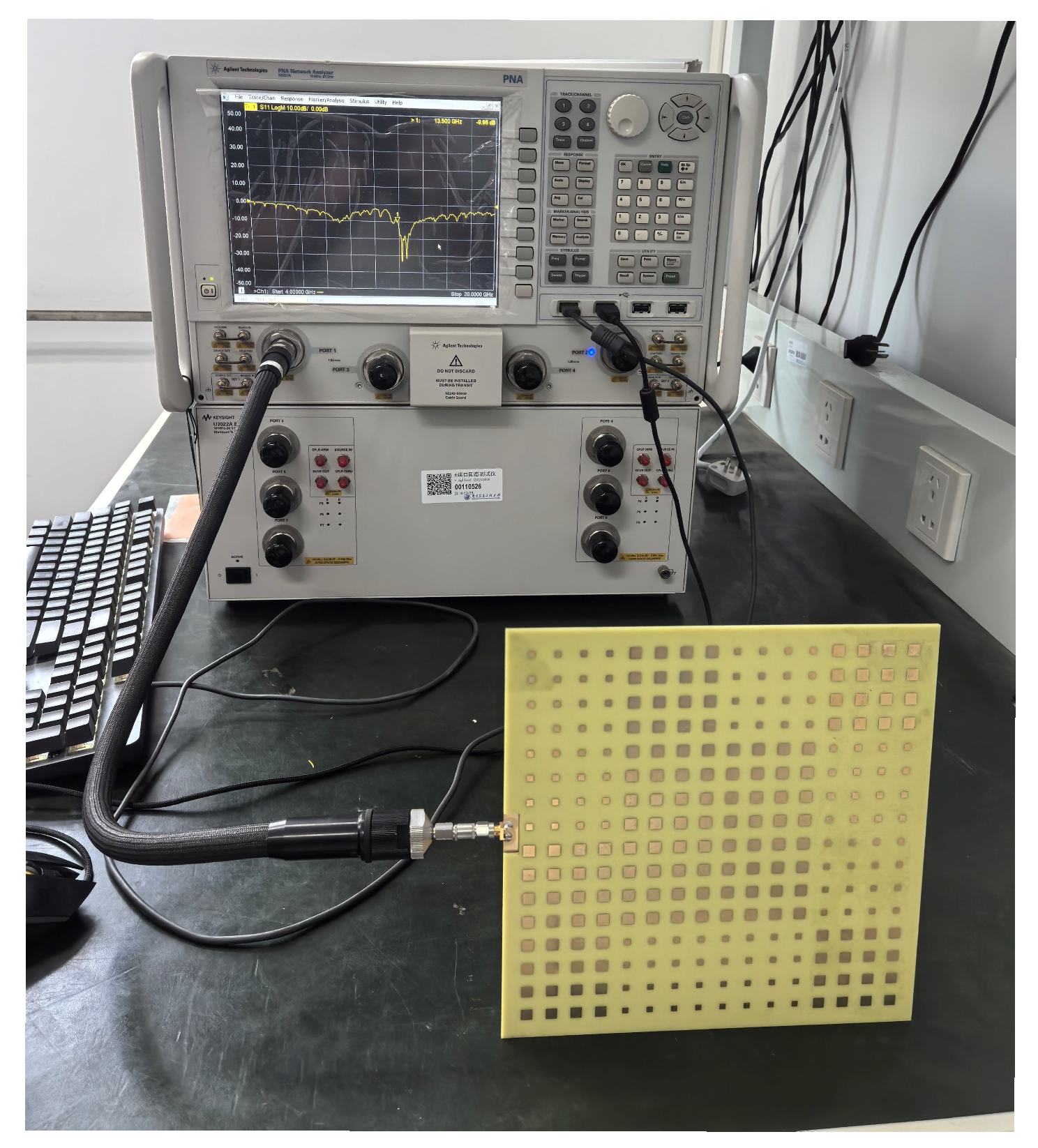
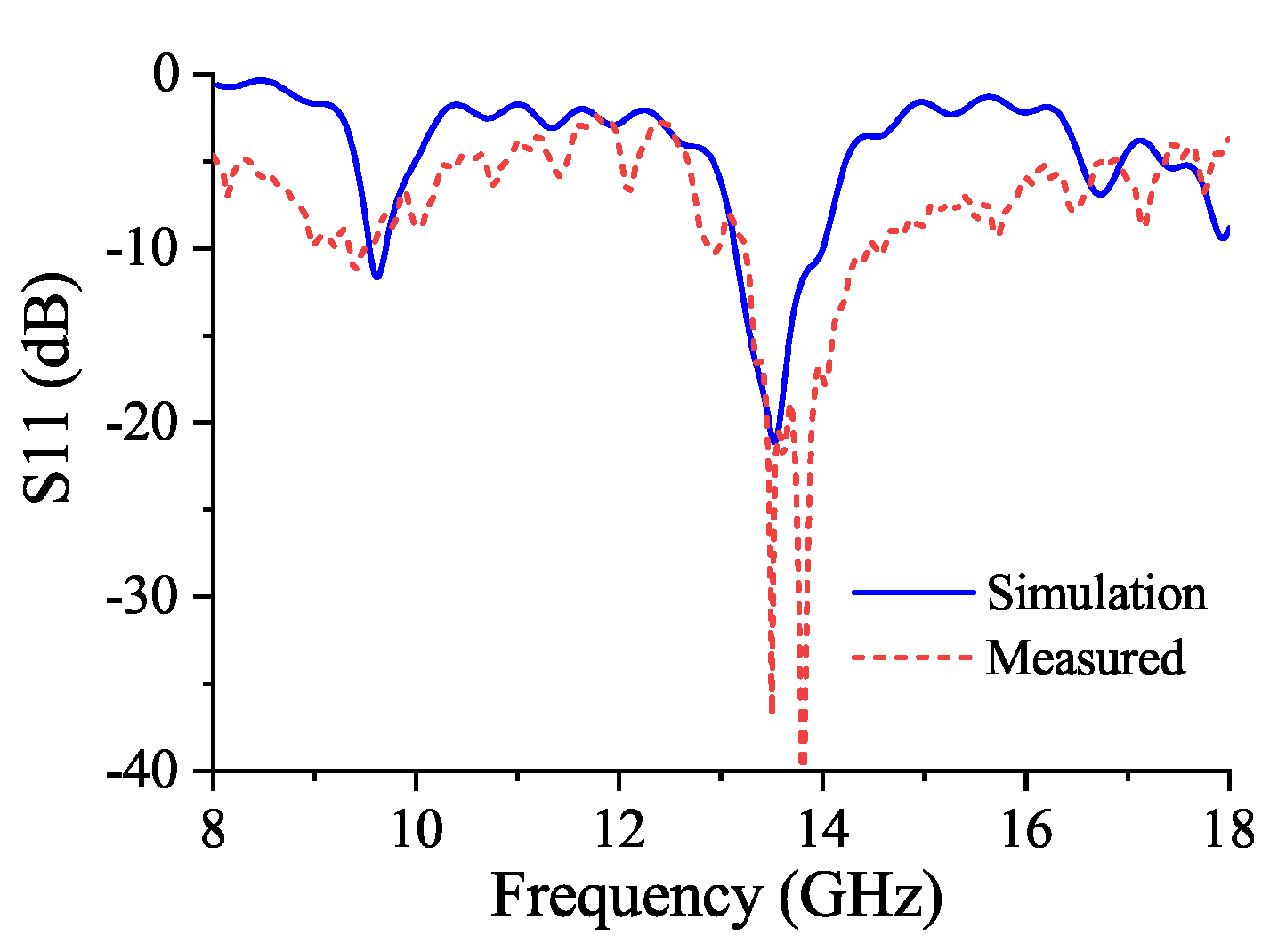
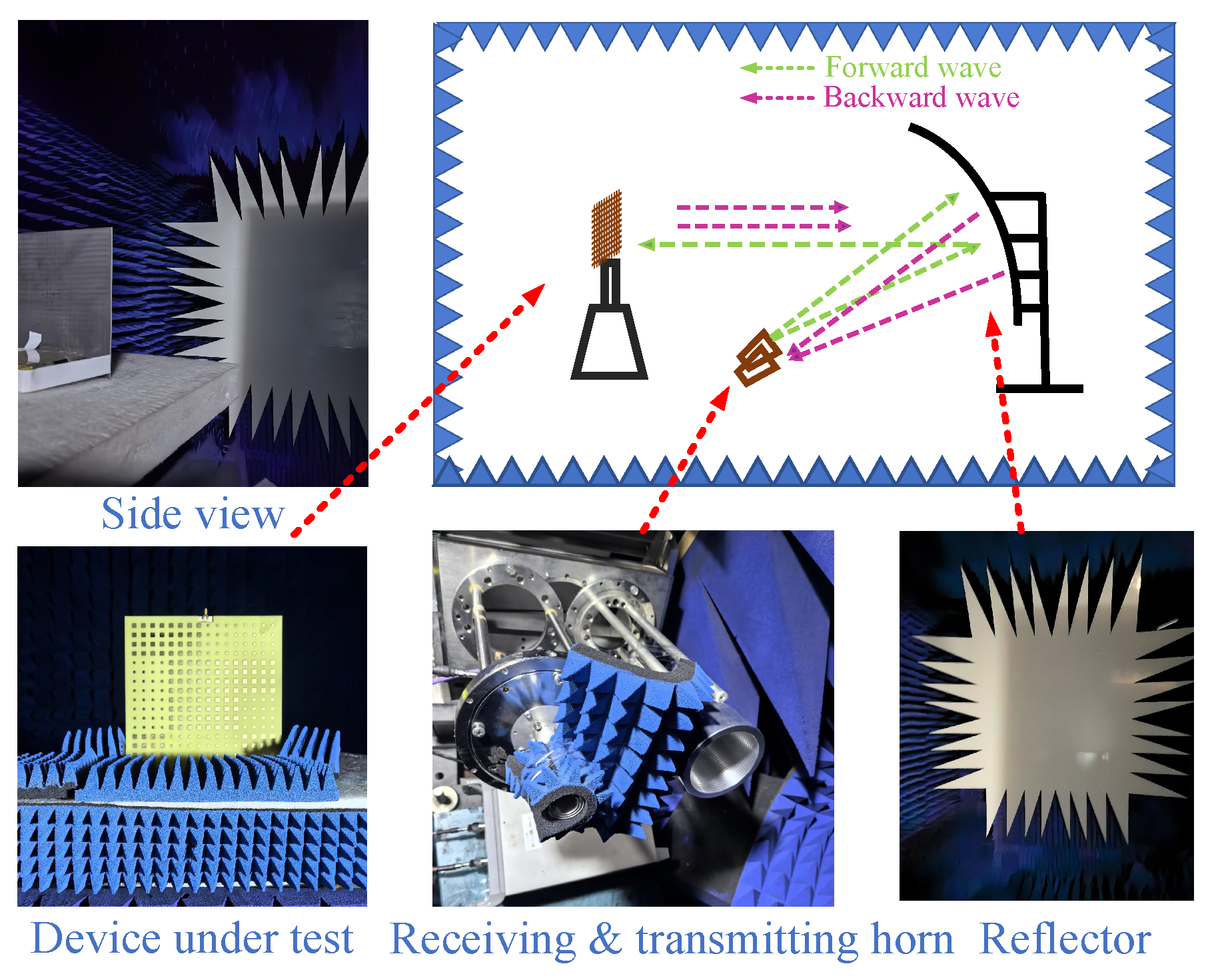
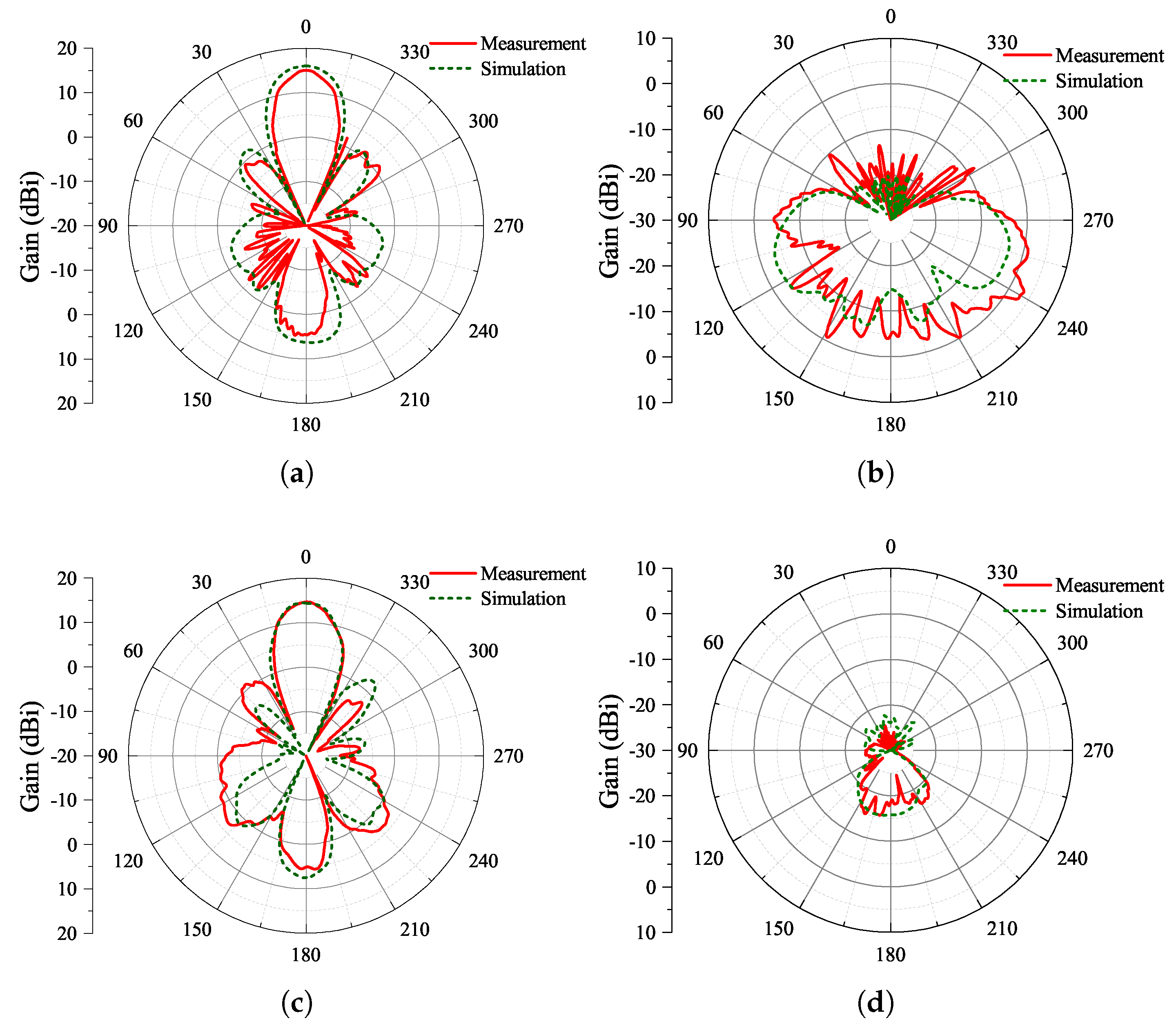

| Parameter | Value | Parameter | Value | Parameter | Value | Parameter | Value |
|---|---|---|---|---|---|---|---|
| 98.5 | 3 | 7.6 | 6.0 | ||||
| 6.0 | 4.0 | 0.4 | 0.85 | ||||
| 1.8 |
| Ref. | RCS Tech. | Antenna Band (GHz) | Gain (dBi) | Size () | RCS Reduction (GHz) | Other |
|---|---|---|---|---|---|---|
| [12] | PCM | 8.2–12 | 12.6 | 7.6–16.2/76%/>10 dB | ||
| [19] | PCM | 5.63–6.12 | 12–15.6 | 8–18/77%/>6 dB | ||
| [20] | PCM | 7.7–11.1 | 10–12 | 8.2–11/29%/>10 dB | ||
| [21] | PCM | 8.7–11.5 | 10–12 | 9.2–21.2/79%/>10 dB | ||
| [24] | AM | 2.96–3.04 | 17.7 | 3.0–3.15/4.7%/>10 dB | with varactors | |
| [25] | CM | 9.6–10.7 | 4–6 | 8.5–12/34%/>9 dB | with diodes | |
| [17] | AMC | 4.78 | 6 | 4.6–6.1/26%/>8 dB | OAM | |
| [18] | AMC | 4.8–5.4 | 15 | 4–8/67%/>5 dB | ||
| This work | AMC | 13.1–14.1 | 15 | 10–16/46%/>8 dB |
Disclaimer/Publisher’s Note: The statements, opinions and data contained in all publications are solely those of the individual author(s) and contributor(s) and not of MDPI and/or the editor(s). MDPI and/or the editor(s) disclaim responsibility for any injury to people or property resulting from any ideas, methods, instructions or products referred to in the content. |
© 2025 by the authors. Licensee MDPI, Basel, Switzerland. This article is an open access article distributed under the terms and conditions of the Creative Commons Attribution (CC BY) license (https://creativecommons.org/licenses/by/4.0/).
Share and Cite
Yang, R.; Liao, X.; Wang, Y.; Qian, X.; Wang, M.; Zhang, H.; Fang, X. Co-Design of Single-Layer RCS-Reducing Surface and Antenna Array Based on AMC Technique. Electronics 2025, 14, 2392. https://doi.org/10.3390/electronics14122392
Yang R, Liao X, Wang Y, Qian X, Wang M, Zhang H, Fang X. Co-Design of Single-Layer RCS-Reducing Surface and Antenna Array Based on AMC Technique. Electronics. 2025; 14(12):2392. https://doi.org/10.3390/electronics14122392
Chicago/Turabian StyleYang, Rongyu, Xiaoyi Liao, Yujie Wang, Xiangcheng Qian, Minxing Wang, Hongfei Zhang, and Xiaoxing Fang. 2025. "Co-Design of Single-Layer RCS-Reducing Surface and Antenna Array Based on AMC Technique" Electronics 14, no. 12: 2392. https://doi.org/10.3390/electronics14122392
APA StyleYang, R., Liao, X., Wang, Y., Qian, X., Wang, M., Zhang, H., & Fang, X. (2025). Co-Design of Single-Layer RCS-Reducing Surface and Antenna Array Based on AMC Technique. Electronics, 14(12), 2392. https://doi.org/10.3390/electronics14122392






